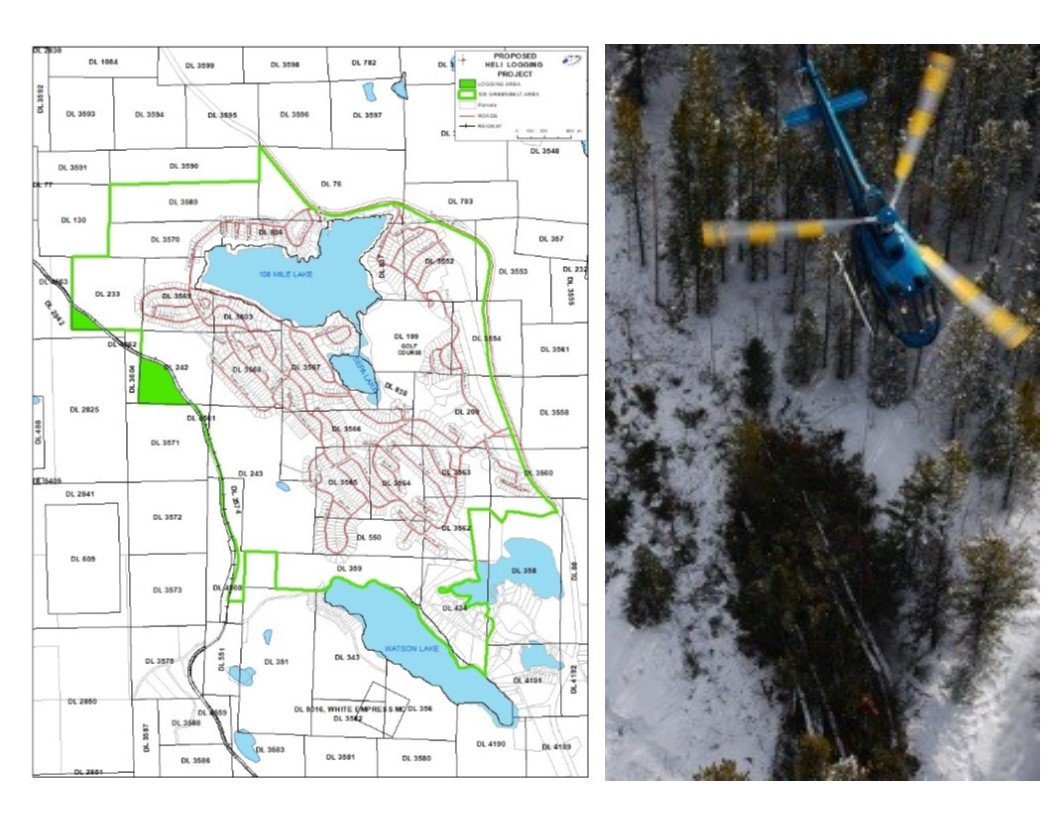Burning of the debris piles remaining from last winter’s fuel management program in Walker Valley has just about been completed and seeding will be carried out in the spring.
Additional fuel management work is being undertaken this winter in two relatively small areas of greenbelt on the west side of the railway tracks. These are the two triangles across from the Kallum loop and Gloinnzun Crescent, shaded in green on the accompanying map – just beyond narrow white band that is the railway right of way. These areas are not accessible from 108 Mile Ranch.
The fuel management forest thinning undertaken in the two triangles is similar to that carried out in Walker Valley last winter. All work, including brush piling, should be complete by early April.
There is one small area, approximately 4 hectares in size, in the more northerly triangle where there is a very steep slope, making mechanical harvesting impossible. This area is quite densely forested, and there is also considerable deadfall that has added fuel to the forest floor. The Greenbelt Commission has contracted with Sarver Wood Fibre, also known as Sarvair, a helicopter logging company based at the 108, to hand thin this slope and lift the logs (including deadfall) to a nearby landing for processing.
Heli logging will begin shortly and, depending on the weather, will continue over the next week or so. Please remember drones and model aircraft are not permitted within 3 km of the area where the helicopter is working.
The Greenbelt Commission’s fuel management work on the west side of the railway tracks has been strongly encouraged and supported by the BC Wildfire Service. Our neighbours to the west and north of 108 Mile Ranch have also initiated forest fuel management programs on lands they own or manage. The Wildfire Service indicates once we have all completed our work there will be a wide fuel break on those flanks and the risk of a serious interface fire will be significantly reduced.
This spring the Greenbelt Commission is contracting to undertake a re-examination of the numerous pockets of greenbelt inside 108 Mile Ranch. Fire mitigation efforts began in these areas more than two decades ago. Forests were thinned, dead trees were removed and ladder fuels were eliminated. However more work is now needed, especially in areas where recent infestations of fir bark beetle have killed whole stands of trees. Recommendations coming out of this study and planned actions will be shared with residents as soon as possible.
Al Richmond
Cariboo Regional District







